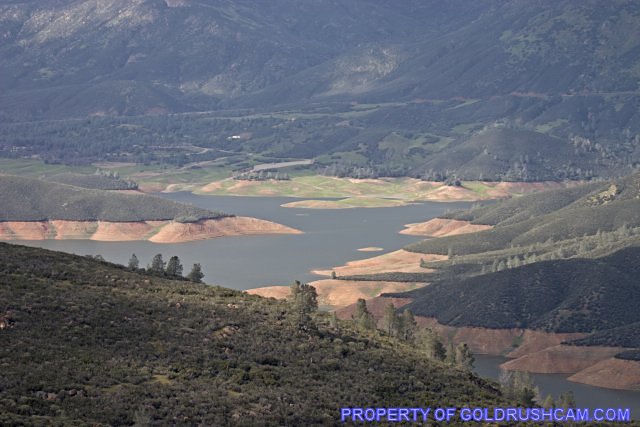Lake McClure in Mariposa County
Sierra Sun Times file photo
June 15, 2022 – By Christine Souza – As California experiences a third consecutive drought year, many Sacramento Valley farmers, well known for supporting waterfowl that stop along the Pacific Flyway, are left dry.
Farmers face water supply problems that are worse this season than in previous dry years.
“This drought is hitting Northern California very hard and in unprecedented ways,” said Ellen Hanak, director of water policy for the Public Policy Institute of California, speaking about the drought last week. a meeting of the California State Board of Food and Agriculture. “It’s important for Northern California, obviously, because entire irrigation districts are just not planting rice and entire communities on the west side of the Sacramento Valley are going to be hit hard.”
Drought conditions are different this year due to particular impacts in the Northern State. Hanak said Northern California “is the wettest part of the state and is the supply reservoir for many other parts of the state.”
“Unlike previous years when farmers in the Sacramento Valley were able to make water available through transfer markets,” she said, “I don’t think we’ll see much of that this year.”
The United States Bureau of Reclamation, which oversees the federal Central Valley project, announced this spring that no water would be delivered to agricultural water contractors north and south of the delta. The agency announced that it would only provide water to meet health and safety needs.
Tim Johnson, president and CEO of the California Rice Commission, said rice farmers face profound challenges.
“This is by far the biggest impact on our industry in my (27-year) tenure,” he said.
Sacramento Valley rice farmers are expected to cultivate 250,000 acres of crop this year, Johnson said. This represents half of the 500,000 acres usually cultivated. The last time rice farmers produced such an amount was in 1956.
Johnson pointed to an economic impact report by Dan Sumner, an agricultural economist at the University of California, Davis.
“The jobs lost this year, due to a reduction in plantings in the Sacramento Valley, are estimated at 14,300 and $1.3 billion in lost economic value,” he said, adding that the sector rice accounted for a third of these losses.
“Farmers who have crop insurance will be fine and weather the drought, but what’s wrong are our communities and our employees,” Johnson said. “They don’t have crop insurance.”
Colusa County Agriculture Commissioner Anastacia Allen said “seeing firsthand what’s happening in the county” this year “has been devastating.” The county has gone from an annual average of 150,000 acres of rice to just over 7,000 acres this year, she said.
The Sacramento Valley is one of the state’s growing regions for tomato processing. The Food and Agriculture Council heard from Yolo County farmer Frank Muller, who said the California Tomato Growers Association expects the season’s processing tomato crop for the state is lower than the 11.7 million tonnes predicted by the US Department of Agriculture’s National Agricultural Statistics Service.
“The underlying factor here is that we won’t be able to produce enough tomatoes in California,” Muller said, adding that California produces 96% of America’s tomato supply and about 32% of the world’s tomato supply. . “We are chipping away at our inventory, and our inventory levels are expected to fall below historic industry lows, so that is a concern.”
Muller said he wasn’t as affected as others by the water supply this year. He said he achieved a 40% reduction in his documented water use by switching to drip irrigation.
“Growers have made huge investments in drip irrigation and irrigation technology, and that has really helped our industry,” Muller said. “I think most farmers prioritize: where’s the best value for every drop of water? You’re growing crops that will earn you the most, and tomatoes are up there.”
During the meeting, many participants mentioned an urgent need to prepare for the years to come by increasing the state’s water storage capacity.
“We need to accelerate action on water infrastructure and be innovative to support the vital long-term role that farmland plays in the future of this state,” the Food and Agriculture Council Chairman said. of California State Agriculture, Don Cameron, who operates a farm in Fresno County.
California Water Commission Chief Executive Officer Joe Yun discussed the seven water storage projects that qualified for public benefit funding through the 2014 Proposal 1 Program. investment in water storage. Projects, which have the potential to add 2.77 million acre-feet of new storage capacity above and below ground, are progressing and on schedule with final award hearings for expected projects in the next few years, he said.
Regarding state investments in water and drought relief, Nancy Vogel, assistant secretary for water at the California Natural Resources Agency, said Governor Gavin Newsom and the US legislature State had adopted last summer a program of 5.2 billion dollars over three years.
Vogel said the California Department of Water Resources has also distributed hundreds of millions of dollars to small communities and urban water districts for projects to improve water efficiency.
(Christine Souza is deputy editor of Ag Alert. She can be reached at [email protected].)
ABOUT THE CALIFORNIA FEDERATION OF AGRICULTURAL BUREAU
The California Farm Bureau Federation works to protect family farms and ranches on behalf of nearly 32,000 members statewide and as part of a nationwide network of more than 5.5 million Farm Bureau members .
Source: Reprinted with permission from CFBF











More Stories
Farm managers detained after a rope trap on a fence killed a leopard
Cultivating a Crop West Branch Students Explore Agriculture
Learn about biodynamic farming with Michigan’s oldest community-supported agricultural farm